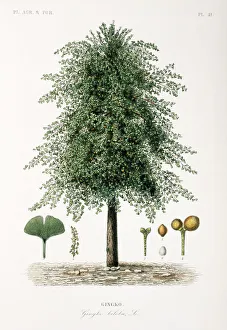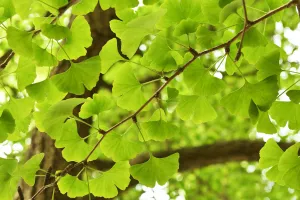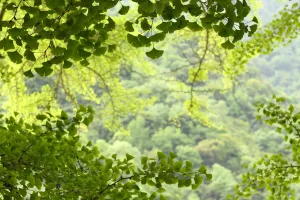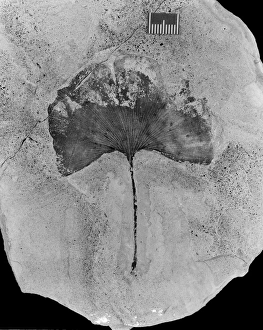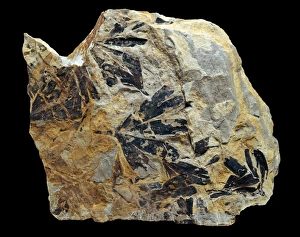Ginkgoales Collection
"Ginkgoales: Exploring the Ancient Beauty of Ginkgo Biloba" Step into the enchanting world of Ginkgo biloba, commonly known as the maidenhair tree
All Professionally Made to Order for Quick Shipping
"Ginkgoales: Exploring the Ancient Beauty of Ginkgo Biloba" Step into the enchanting world of Ginkgo biloba, commonly known as the maidenhair tree. With its distinctive fan-shaped leaves, this ancient species has captivated nature enthusiasts for centuries. Found in Tangjiahe National Nature Reserve in Sichuan, China, the leaves of a Ginkgo tree create a breathtaking sight. Their vibrant green hue and delicate structure make them stand out amidst the lush surroundings. But these trees are not just visually appealing; they hold great historical significance too. Fossilized remains have been discovered, including a Homo sapiens cranium named Liujiang 1 and fossil maidenhair tree leaves labeled C016/5957 and C016/5952. The ginkgophytes family includes various species like Ginkgo adeantoides, Ginkgo gardneri, and even extinct ones like Ginkgo huttoni. These diverse members showcase the resilience and adaptability of this remarkable plant lineage. Grown worldwide for their medicinal properties, ginkgophytes possess numerous health benefits. The extract from their leaves is believed to enhance memory function while promoting overall brain health—a testament to their enduring legacy. As we marvel at these majestic trees' beauty today, it's awe-inspiring to think that they have survived millions of years on Earth. The ginkgophytes serve as living fossils—reminders of our planet's rich history and evolution over time. So next time you encounter a Ginkgo biloba or maidenhair tree leaf fluttering down gracefully before your eyes or spot one standing tall in all its glory within Tangjiahe National Nature Reserve—take a moment to appreciate its timeless elegance and profound connection to our past.

